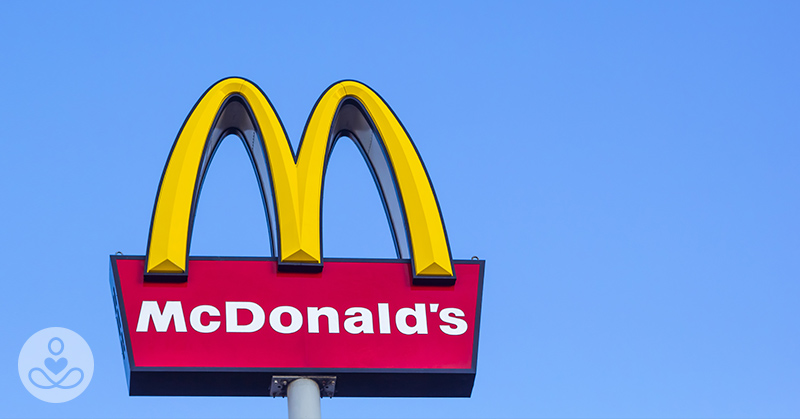This article was originally published March 29, 2019
Self-serve machines don’t necessarily reduce the amount of labor (they pass it on to you), but they can reduce queueing and make operations move along faster. It’s easier to flip through a screen and order on it than to stand in long queues and wait forever before you can order. Payments are also made on these machines using debit and credit cards.
UK McDonald’s has a lot of questions to answer after the recent investigation carried out on their self-order machines across the country. The investigation was conducted by Metro.co.uk [1]. It’s definitely creepy to know that in 8 McDonald’s restaurants across the UK, fecal matter (poop) and its bacteria were found on their touchscreen machines. Six of these restaurants are situated in London, and the other two are in Birmingham.
Dr. Paul Matewele, Senior lecturer in microbiology at London Metropolitan University, was absolutely shocked at the different kinds of bacteria that were discovered during the laboratory tests of the swabs.
‘We were all surprised how many gut and fecal bacteria there was on the touchscreen machines,” he said. “These cause the kind of infections that people pick up in hospitals. For instance, Enterococcus faecalis is part of the flora of gastrointestinal tracts of healthy humans and other mammals. It is notorious in hospitals for causing hospital-acquired infections.”
How do these bacteria get on the machines?
People don’t usually care to wash their hands before they use the touchscreens. A lot of customers would troop into the restaurant right after using the bathroom at their workplace. Many of them don’t wash their hands after using the bathroom, which is one of the most disgusting and inhuman habits ever.
A wide array of bacteria, both the harmful and the harmless, were discovered on these machines. They included Coliforms, Pseudomonas, Enterococcus faecalis, Proteus, Bacillus, Klebsiella, Listeria, Micrococcus, and Staphylococcus, distributed in different combinations across the machines on each location.
This is incredibly unhealthy for the customers who more often than not forget to wash their hands after picking up takeout. Even when they’re going to eat in, a lot of people still don’t wash their hands. This habit is unhygienic on its own and should be corrected, but the machines have to be cleaned more frequently.
Staphylococcus is a dangerous bacteria that can cause blood poisoning and induce septic shock [2]. It’s highly contagious, and its presence on one of the touchscreens is highly alarming.
“Seeing Staphylococcus on these machines is worrying because it is so contagious,” said Dr. Matewele. “It starts around people’s noses, if they touch their nose with their fingers and then transfer it to the touchscreen someone else will get it, and if they have an open cut which it gets into, then it can be dangerous. There is a lot of worries at the moment that staphylococcus is becoming resistant to antibiotics. However, it is still really dangerous in places like Africa where it can cause toxic shock.”
Dr. Matewele did acknowledge the fact that the staff at McDonald’s do actually clean the self-help machines with disinfectants. Unfortunately, for this level of contagious and dangerous bacteria to be found on them, they are most likely not using strong antiseptics.
Study finds fecal matter on touchscreens at eight McDonald’s in UK from CNBC.
Perhaps, they are just not cleaned regularly enough.
Aside from the machines being cleaned regularly, customers will also have to contribute to keeping the restaurants safe. A group of bacteria called coliform bacilli includes Klebsiella, which was found on the swabs from every single one of the machines. Additionally, Proteus bacteria was also present. These bacteria are mostly found in human and animal feces, and in saliva and include overt and opportunistic pathogens responsible for a wide range of infections.[3]
Dr. Matewele explained further that, “It [Proteus] can cause urinary tract infections and is also one of the hospital-acquired infections where it may responsible for septicemia. Klebsiella is also from the gut and mouth, they are associated with urinary tract infections, septicemia, and diarrhea. Some species can infect the respiratory tract resulting in pneumonia.”
It’s beyond imagination why anyone would use the bathroom and not wash their hands, but there are always going to be some who don’t do it.
These touchscreens make things easier and faster in restaurants. However, due to the presence of certain bacteria, they’re a possible hazard to human health. They may be just as bad as restaurant menus, which can have been found to be loaded with easily transferable bacteria [4]
Touchscreens aren’t going to be banned, but it’s important that customers always wash their hands after using the machines. It takes nothing less than a minute.
Restaurants may need to use stronger antiseptics to thoroughly wipe down the machines several times a day. The safety and wellbeing of the customers are of paramount importance.
Metro.co.uk sought answers from McDonald’s regarding these findings, and a representative replied, stating that: “Our self-order screens are cleaned frequently throughout the day. All of our restaurants also provide facilities for customers to wash their hands before eating.”
So far, there have not been any reports of any illnesses caused by people touching the screens. It should also be noted, that this can be an issue with any touch screen at any high traffic establishment. In the end, as long as one practices proper hygiene, the chances of contracting something serious are lower and can even be avoided.
Sources
- https://metro.co.uk/2018/11/28/poo-found-on-every-mcdonalds-touchscreen-tested-8178486/
- https://www.mayoclinic.org/diseases-conditions/staph-infections/symptoms-causes/syc-20356221
- https://www.ncbi.nlm.nih.gov/books/NBK8035/
- https://www.omicsonline.org/open-access/pathogen-persistence-in-restaurant-menus-comparison-between-materials-jfmsh-1000104.php?aid=70382

